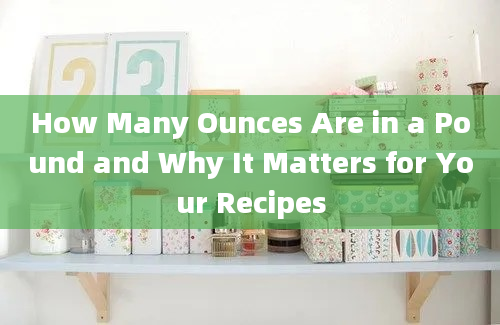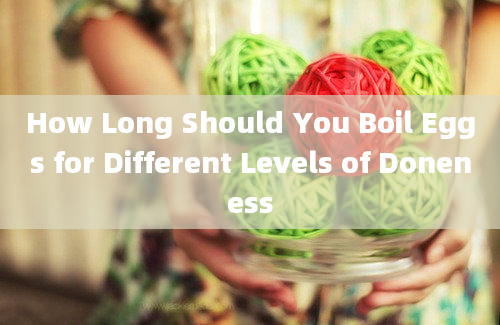How Many Ounces Are in a Cup and Why It Matters in Your Recipes

Accurate measurements are crucial in cooking and baking, as they can make the difference between a delicious dish and a culinary disaster. One common question that arises in the kitchen is, "How many ounces are in a cup?" This seemingly simple question has significant implications for recipe outcomes. Let's delve into the details.
Understanding the Basics
1. Standard Measurements:
In the United States, the standard measurement for a cup is 8 fluid ounces. This is a widely accepted convention used in most recipes. However, it's important to note that this measurement can vary slightly depending on the ingredient. For instance, 1 cup of flour typically weighs around 4.5 ounces, while 1 cup of water weighs exactly 8 fluid ounces.
2. Metric System:
In countries that use the metric system, the conversion is different. One cup is approximately 240 milliliters, which equates to about 8.45 fluid ounces. This slight difference can affect recipes that require precise measurements.
Why Precision Matters
1. Baking Science:
Baking is a science where precise measurements are critical. Ingredients like flour, sugar, and leavening agents need to be measured accurately to ensure the right chemical reactions occur. For example, too much flour can make your baked goods dense, while too little can cause them to collapse.
2. Consistency:
Consistent measurements ensure that your recipes turn out the same every time. This is particularly important for professional chefs and home cooks who want to replicate their favorite dishes.
3. Nutritional Accuracy:
Accurate measurements also impact the nutritional content of your food. If you're tracking your intake, knowing exactly how much of each ingredient you're using is essential.
Sources and Further Reading
For more indepth information on measurement conversions and their importance in cooking, you can refer to the following authoritative sources:
U.S. Department of Agriculture (USDA): [USDA Cooking Measurements](https://www.usda.gov)
The Joy of Cooking by Irma S. Rombauer: A classic cookbook that provides detailed measurement guidelines.
National Institute of Standards and Technology (NIST): [NIST Weights and Measures](https://www.nist.gov)
Conclusion
Understanding how many ounces are in a cup and why it matters can significantly enhance your cooking and baking skills. Whether you're following a family recipe or experimenting with a new dish, precise measurements are key to achieving the best results.
Frequently Asked Questions (FAQs)
Q1: How many fluid ounces are in a standard cup?
A1: A standard cup in the United States contains 8 fluid ounces.
Q2: Does the weight of 1 cup vary by ingredient?
A2: Yes, the weight of 1 cup varies by ingredient. For example, 1 cup of flour weighs about 4.5 ounces, while 1 cup of water weighs 8 fluid ounces.
Q3: How many ounces are in a cup in the metric system?
A3: In the metric system, 1 cup is approximately 240 milliliters, which is about 8.45 fluid ounces.
Q4: Why is accurate measurement important in baking?
A4: Accurate measurement is crucial in baking because it ensures the right chemical reactions occur, leading to the desired texture and rise in baked goods.
Q5: Can using the wrong measurement affect the nutritional content of a dish?
A5: Yes, using the wrong measurement can alter the nutritional content of a dish, making it difficult to track intake accurately.
Q6: What is the difference between fluid ounces and ounces by weight?
A6: Fluid ounces measure volume, typically used for liquids, while ounces by weight measure mass, used for solid ingredients.
Q7: How can I ensure precise measurements in my recipes?
A7: Use measuring cups and spoons designed for specific ingredients, and always level off dry ingredients with a straight edge.
Q8: Is it better to use a digital scale for measurements?
A8: Yes, a digital scale provides more accurate and consistent measurements, especially for dry ingredients.
Q9: Can slight variations in measurements ruin a recipe?
A9: Slight variations can significantly impact the outcome, especially in baking, where precision is key.
Q10: Where can I find reliable information on measurement conversions?
A10: Reliable information can be found on authoritative websites like the USDA, NIST, and in wellregarded cookbooks like "The Joy of Cooking."
By understanding these basics and FAQs, you'll be wellequipped to handle any recipe with confidence and precision. Happy cooking!









